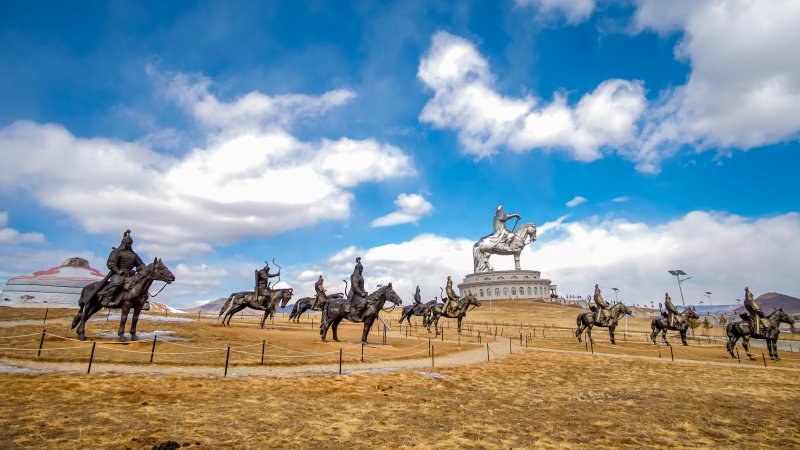Khara-Khoto ‘Black City’ – Besieged By Genghis Khan But Flourished Under Mongol Rule
A. Sutherland - AncientPages.com - Khara-Khoto ("black city" or "black water city") was inhabited by Tangut people and located about 200 miles north of the legendary Silk Highway and 625 miles west of the Inner Mongolian capital of Hohhot.
Eastern gate to Kharakhoto, facing northwest, October 2008. This file has been provided by the International Dunhuang Project from its digital collections, from original file BLP465_PHOTO1187_1_23. Image credit: Rachel Roberts - CC BY-SA 1.0
Today, some ancient ruins of the lost city are called the "forbidden" or "dead city." Historically, they lived in what is now the Gansu and Shaanxi provinces of northwestern China and in some parts of western Inner Mongolia near the Ejin, also called the "Black" River.
Once, Khara-Khoto was a renowned city and home to skilled artisans, brave warriors, merchants, and sages.
According to local rumors, the old city is buried under sand and inhabited only by demons and ghosts. However, it was only sometimes such a gloomy and lonely place.
In "The Travels of Marco Polo," the author wrote that the mysterious city Khara-Khoto was identified as "Etzina," which Polo writes is towards the north on the verge of the Sandy Desert; it belongs to the Province of Tangut. The people are Idolaters and possess plenty of camels and cattle, and the country produces many good falcons, both Sakers and Lanners.
The inhabitants live by their cultivation and cattle; they have no trade. At this city, you should lay in victuals for forty days because when you quit Etzina, you enter on a desert which extends forty days' journey to the north, and on which you meet with no habitation nor baiting-place."
Khara-Khoto in Inner Mongolia. Credit: Adobe Stock - 辉 李
Khara-Khoto was founded by the Tangut people in 1032 and became the capital of their Western Xia Dynasty (1038–1227) and a thriving trade hub.
Fortified City Fell To Genghis Khan's Army
The city was well-fortified, but finally, it was besieged by Genghis Khan's Army in 1227. Surprisingly, it did not collapse. It still flourished under Mongol rule. Even during the Mongol-led Yuan Dynasty (1271-1368), Khara-Khoto expanded its original size more than three times (!). In other words, despite obedience to the powerful Mongolians, the city could thrive and live in peace for more than 150 years under their rule.
"The ruins of Khara-Khoto, where Kozlov's expeditions discovered numerous Tangut documents in the early twentieth century, are located on the northwestern border of the original Xi Xia times; Khara-khoto was an essential military defense installation against attacks by Mongol nomads from the Mongol plateau to the north. Genghis Khan (Temujin) founded the Mongol Empire at the beginning of the thirteenth century and invaded Xi Xia many times before finally conquering it in 1227.
After the conquest of Xi Xia, the Mongol Empire controlled a territory of unprecedented size in Eurasia. According to a standard view, Genghis Khan's activities and the Mongol Empire's overwhelming military power were responsible for the defeat of Xi Xia." 1
The Genghis Khan statue complex Ulaanbaatar, Mongolia. Credit: Adobe Stock - Nuttee
Khara-Khoto faced many problems much later. The Yuan Dynasty began to collapse and eventually was driven out of China by the armies of the Ming Dynasty (1368-1644) to Mongolia. Many Mongolian troops settled in Khara-Khoto, and no one attempted to pursue them. By 1372, they saw the possibility of conquering the country again and began to plan to reinvade China.
Soon, they discovered that it was a very unfortunate plane.
Ming Attack On Khara-Khoto Fortified City
Local legend says that China's Ming troops laid siege to the city that same year, but it took work. The town was so well-fortified that the Ming military forces could not take it. Instead, they had to use a cunning and cruel solution.
In 1372, a Mongol military general named Khara Bator (Mongolian: "Black hero") was surrounded by his troops by the armies of China's Ming dynasty. Ming troops found a way to divert the nearby Ejin River, the city's only water source that flowed outside the fortress. In this way, the enemy denied Khara-Khoto water for its wells and gardens.
As time passed, Khara Bator realized his fate. He killed his wife, children, and then himself. After his suicide, Khara Bator's soldiers waited within the fortress until the Ming finally attacked and killed the remaining inhabitants.
They knew they had to die of thirst or confront the Ming soldiers in combat. They chose the latter.
Another legend holds that Khara Bator breached the northwestern corner of the city wall and escaped through it. The Ming armies finally attacked and slaughtered the Mongols at Khara-Khoto. Afterward, the city was permanently abandoned and fell to ruin.
Researchers had to organize expeditions to the area to learn about the region's history and the city of Khara-Khoto. One of them was P. K. Kozlov, who arrived at the site and, with a dinner and gift of a gramophone to a local Torghut lord, Dashi Beile, the researcher obtained permission to excavate the Khara-Khoto ruins. Kozlov uncovered over 2,000 books, scrolls, and manuscripts in the Tangut language. Kozlov initially sent ten chests of manuscripts and Buddhist objects to St. Petersburg, returning in May 1909 for other things.
In June, the books and woodcuts were found while excavating a stupa outside city walls some 400 m (1,300 ft) westward.
Another researcher was Sir Aurel Stein, a Hungarian-born British archaeologist. Stein excavated Khara-Khoto during his third Central Asian expedition from July 1913 to February 1916, surveying Khara-Khoto for eight days at the end of May 1914. His findings have been described in his first volume of "Innermost Asia" (source below).
Written by – A. Sutherland - AncientPages.com Senior Staff Writer
Updated on Sep 28, 2023
Copyright © AncientPages.com All rights reserved. This material may not be published, broadcast, rewritten or redistributed in whole or part without the express written permission of AncientPages.com
Expand for references- Sato Takayasu 佐藤貴保. "Defense Challenges for the Capital of the Xi Xia (Tangut) Kingdom: Evidence from Research on Khara-Khoto Documents from around 1210." Central Asiatic Journal57 (2014): 201-08
Stein, Marc Aurel. "Innermost Asia Detailed Report of Explorations in Central Asia, Kan-Su and Eastern Īrān." source
More From Ancient Pages
-
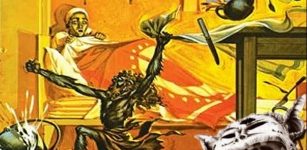 Tokoloshe: Demonic Creature That Feeds On Spiritual Energy Of Its Victims
African Mythology | Sep 9, 2020
Tokoloshe: Demonic Creature That Feeds On Spiritual Energy Of Its Victims
African Mythology | Sep 9, 2020 -
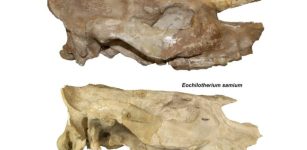 Fossilized Skulls Reveal Relatives Of Today’s Rhinos Had No Horn And Died Out 5 Million Years Ago
Fossils | Nov 2, 2023
Fossilized Skulls Reveal Relatives Of Today’s Rhinos Had No Horn And Died Out 5 Million Years Ago
Fossils | Nov 2, 2023 -
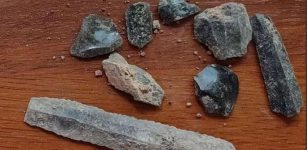 Tracking Prehistoric Relations With AI From The Middle Stone Age To Antiquity
Archaeology | Jul 14, 2023
Tracking Prehistoric Relations With AI From The Middle Stone Age To Antiquity
Archaeology | Jul 14, 2023 -
 Obscure History Of Upper Mustang: Prehistoric Paintings Discovered In Nepal
Archaeology | Dec 21, 2017
Obscure History Of Upper Mustang: Prehistoric Paintings Discovered In Nepal
Archaeology | Dec 21, 2017 -
 Undersea Scans Reveal Astonishing Ancient Submerged World Of The Adriatic Sea
Archaeology | May 11, 2024
Undersea Scans Reveal Astonishing Ancient Submerged World Of The Adriatic Sea
Archaeology | May 11, 2024 -
 Archaeologists And Historians Argue With Geneticists Over Controversial Viking DNA Study
Archaeology | Feb 24, 2017
Archaeologists And Historians Argue With Geneticists Over Controversial Viking DNA Study
Archaeology | Feb 24, 2017 -
 Kuthodaw Pagoda – ‘The World’s Largest Book’ Carved In 729 Marble Slabs
Featured Stories | Feb 24, 2018
Kuthodaw Pagoda – ‘The World’s Largest Book’ Carved In 729 Marble Slabs
Featured Stories | Feb 24, 2018 -
 Secret Coded Boontling Language Of Northern California
Ancient History Facts | Apr 8, 2019
Secret Coded Boontling Language Of Northern California
Ancient History Facts | Apr 8, 2019 -
 Killer-Of-Enemies – Mysterious Non-Human Teacher And Hero Of The Apache Indians
Featured Stories | Nov 16, 2020
Killer-Of-Enemies – Mysterious Non-Human Teacher And Hero Of The Apache Indians
Featured Stories | Nov 16, 2020 -
 Longest European Burial Mound Pre-Dating The Egyptian Pyramids Discovered In Czechia
Archaeology | Jun 24, 2024
Longest European Burial Mound Pre-Dating The Egyptian Pyramids Discovered In Czechia
Archaeology | Jun 24, 2024 -
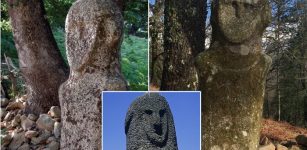 Corsica: ‘The Island Of Statue-Menhirs’ – Where Humans Lived At Least 7,000 BC
Featured Stories | Feb 28, 2024
Corsica: ‘The Island Of Statue-Menhirs’ – Where Humans Lived At Least 7,000 BC
Featured Stories | Feb 28, 2024 -
 Unique Ancient Half-Mummy Unearthed In Luxor, Egypt Mystifies Archaeologists
Archaeology | Jun 6, 2022
Unique Ancient Half-Mummy Unearthed In Luxor, Egypt Mystifies Archaeologists
Archaeology | Jun 6, 2022 -
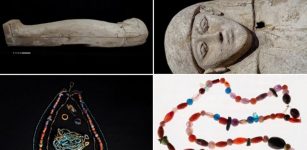 Beautiful Necklaces And Amulets Discovered In Ancient Egyptian Tomb
Archaeology | Apr 27, 2020
Beautiful Necklaces And Amulets Discovered In Ancient Egyptian Tomb
Archaeology | Apr 27, 2020 -
 10 Mysterious Ancient Manuscripts With Hidden Secrets
Featured Stories | May 27, 2016
10 Mysterious Ancient Manuscripts With Hidden Secrets
Featured Stories | May 27, 2016 -
 Deception And Hidden Truth – Ancient Struggle Of The Eagle And Serpent – Part 2
Ancient Symbols | Sep 6, 2019
Deception And Hidden Truth – Ancient Struggle Of The Eagle And Serpent – Part 2
Ancient Symbols | Sep 6, 2019 -
 Amergin: First Druid And ‘Wondrously Born’ Son Of Mil, Founder Of Poetry, Was Judge In Irish Mythology
Celtic Mythology | Mar 3, 2022
Amergin: First Druid And ‘Wondrously Born’ Son Of Mil, Founder Of Poetry, Was Judge In Irish Mythology
Celtic Mythology | Mar 3, 2022 -
 Beautiful Ancient City Of Pisac In The Sacred Valley, Peru – Incredible Inca Ruins
Featured Stories | Jun 22, 2017
Beautiful Ancient City Of Pisac In The Sacred Valley, Peru – Incredible Inca Ruins
Featured Stories | Jun 22, 2017 -
 Why Were The Jews Exiled To Babylon?
Ancient History Facts | Jan 14, 2020
Why Were The Jews Exiled To Babylon?
Ancient History Facts | Jan 14, 2020 -
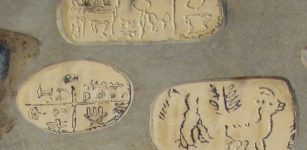 Script On Gradeshnitsa Tablets May Pre-Date Egyptian Hieroglyphs
Artifacts | Mar 9, 2023
Script On Gradeshnitsa Tablets May Pre-Date Egyptian Hieroglyphs
Artifacts | Mar 9, 2023 -
 Ancient Secrets Of Megaliths And Anti-Gravity Revealed – Examination Of An Unknown Property Of Static Electricity
Ancient Technology | Feb 17, 2020
Ancient Secrets Of Megaliths And Anti-Gravity Revealed – Examination Of An Unknown Property Of Static Electricity
Ancient Technology | Feb 17, 2020



